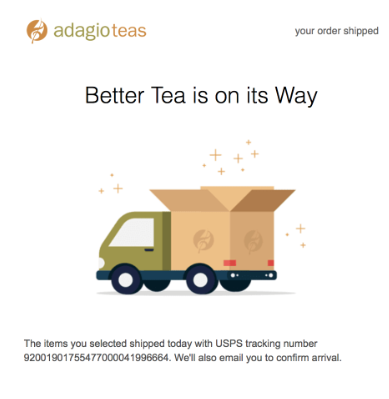
You landed a sale! That’s the main goal of your ecommerce website and you got it done. But while it may seem like all your marketing and the design of your website are all about achieving this specific goal, you’re not done.
The most successful businesses know that someone making a purchase on your website is just the beginning. Now you need to play your cards right to make sure your new customer has an amazing experience with your brand – ideally good enough to sing your praises to friends and become a repeat customer.
It’s all too easy to lose a customer’s trust after the sale. In order to make sure you provide a customer experience worthy of inspiring loyalty, there are a few mistakes you need to be careful to avoid.
1. Being slow to ship.
One of your biggest challenges as an ecommerce business is overcoming customer objections about shipping. If they’re excited about your product (which is mostly a really good thing), it means they’ll be that much more annoyed at having to wait a long time to receive it.
And customer expectations are only getting higher when it comes to shipping speeds. Amazon’s promise of 2-day shipping for Prime members – and even one-day shipping for many orders – has re-shaped consumer expectations of what’s normal. They may not expect you to get the order to them in two days without an extra cost, but they will notice if it takes a couple of weeks or more – especially if you haven’t provided them with a realistic idea of what to expect.
If you can’t afford to offer free or cheap fast shipping to your customers, the least you can (and should) do is make sure you get their products in the mail as soon as possible on your end.
If you can’t afford to offer free or cheap fast shipping to your customers, the least you can (and should) do is make sure you get their products in the mail as soon as possible on your end. Don’t let those products sit there for days before you package them and hand them over to the carrier, aim to have orders in the mail within one to two days of every purchase.
2. Packaging your products badly.
While you do want to package orders fast to get them out in a timely manner, that doesn’t mean you can get away with doing it sloppily. Bad packaging that doesn’t provide enough protection for your products while they’re in transit could lead to damage en route. Imagine finally getting that new product you’ve been waiting for, only to open a box that includes several broken pieces instead. Make sure you pack any fragile items carefully to ensure they’ll make the trip without problem.
In addition, try to avoid waste in the way you package your products. A recent survey found that customers care about eco-friendly packaging – 64% want their packaging to be recyclable and 52% care that’s it’s minimal. Prioritize making sure the product will get there intact first, but consider how to keep your packaging eco-friendly as well.
3. Sending the wrong product.
The people fulfilling orders are human and sometimes mistakes happen, but you want to do everything you can to make sure the products you send exactly match what people ordered. That means the right size, color, and quantity, as well as the right product. Make sure your fulfillment employees are well trained and that you institute a good system for packing orders effectively and double-checking them before they go.
Make sure your fulfillment employees are well trained and that you institute a good system for packing orders effectively and double-checking them before they go.
And in the (hopefully rare) cases where the customer does get something different than they expected, the best practice is to let the recipient keep the item and also send the correct one. Expecting the customer to deal with the hassle of shipping a product back due to a mistake on your end would create a negative overall experience for them (and legally, you can’t require it anyways). This is one case where it’s worth it to swallow the cost to keep the customer happy.
4. Not providing order updates.
During the days a customer spends waiting for an order, they want to know it’s on the way. A recent survey found that almost 100% of shoppers want delivery date estimates. So give it to them.
In addition to your confirmation email, let them know when the order has gone out and when they can expect to receive it. Even better, provide them with the tracking info so they can keep an eye on where the package is and when it’s coming. And if there’s any kind of a delay, be quick to let them know so they’re not disappointed when it doesn’t show up in the expected timeframe.

## 5. Making returns too difficult (or expensive).
Returns are one of the biggest annoyances of ecommerce. In addition to ending up with something in the wrong size or that doesn’t do what they expect, customers also have to take on the hassle of packaging and shipping the item back. To help ease the annoyance, do everything you can to keep returns as painless as possible for your customers.
Provide shipping labels for them and, if possible, offer to cover the cost of shipping or at least part of it. If it’s not practical to cover return shipping costs all the time (it could definitely get expensive!), consider incentivizing future purchases by offering free shipping in exchange for customers requesting a credit rather than a refund. It reduces the cost for them, while providing you the promise of future purchases.
6. Making contact difficult.
If a customer has an issue with the order and needs to get in touch with you, don’t make them do a lot of digging to find the right phone number or email address to use. Include your contact information somewhere easy to find on your website and in the confirmation email. And of course, be sure to reply quickly and do everything you can to resolve the issue to their satisfaction.
7. Not owning any mistakes (if applicable)
Customers generally understand that company employees are human and are willing to forgive an honest error.
No matter how hard you try, at some point, your business is going to make a mistake with an order. Customers generally understand that company employees are human and are willing to forgive an honest error, but only if brands handle it correctly. When you realize your business has messed up an order, admit it right away and go out of your way to make it up to the customer. If a late order comes with some extra free goodies or the wrong item results in receiving a credit toward future orders, customers are much more likely to come away from the experience liking you more rather than less.
8. Letting the relationship end after the first sale.
You put a lot of work and money into converting every new customer to your website. Once a person makes that first purchase, they become even more valuable to you. Make sure you show them that.
Encourage future purchases by urging them to sign up for your email list and offering special deals. If you did everything right and provided them with a great experience for their first purchase, then you’re in a strong position to help turn them into a long-time customer. Make use of the opportunity.
If you have any questions about post-purchase best practices feel free to ask them in the comments!











